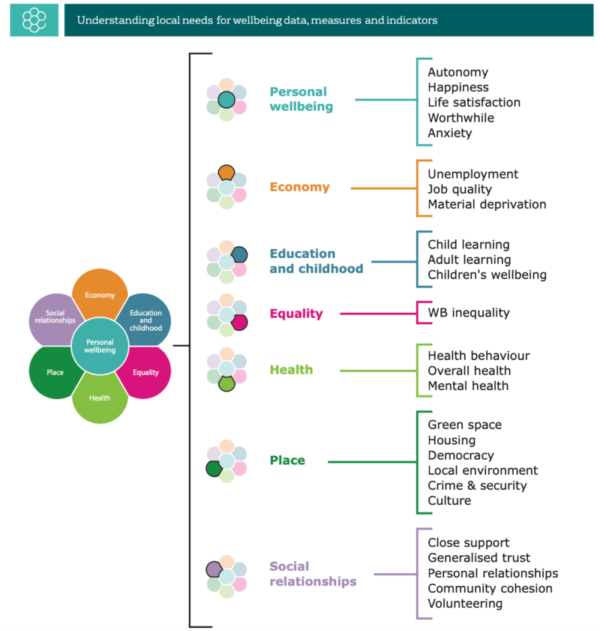Crafting a wellbeing strategy with Redcar and Cleveland Borough Council
In partnership with The Health Foundation, we delivered tailored support to local authorities to place wellbeing at the heart of policy making across different focus areas and local needs.
Gemma Marshall, Mental Health Development Lead at Redcar and Cleveland Borough Council, reflects on her experience of the programme.
I was introduced to The What Works Centre for Wellbeing through my role at Redcar and Cleveland. My colleagues had recently set up a South Tees Wellbeing Network and invited the Centre’s Head of Implementation, Joanne Smithson, to talk about wellbeing.
At Redcar and Cleveland we use a holistic, asset-based approach to target health inequalities. We work alongside local communities and also with local authority employees to support in-need individuals in helping themselves.
Joining the workshop cohort, my thoughts centred on what we already do and how we could harness a wellbeing approach in practice to maximise our resources. Though our approach has proved effective, there were still gaps in the way that we work.
Developing a wellbeing strategy
We didn’t want to produce a strategy that just sat on a shelf. We wanted to do something that could be implemented through the work we already do within our communities. We wanted to embed a new, data-led way of working using wellbeing measures to monitor and target interventions.
Initially, the massive body of wellbeing evidence and data was overwhelming. However, the support within the cohort provided focus, direction and, most importantly, a time to share and reflect with others on the journey of implementing wellbeing.
Measuring community wellbeing
Finding the right ‘level’ for the strategy was tricky. We wanted to be able to understand more about how our communities were doing. Where were differences in quality of life being experienced?
While I was part of the cohort, I took the opportunity to join a consultation exercise the Centre was delivering as part of its Different People, Same Place research. I really enjoyed hearing from the research team and building my understanding of the relationships between individual and place-based community wellbeing.
From this, I decided that a focus on community wellbeing would be the most effective approach for my policy making: identifying the factors which shape our communities and, in turn, affect individual wellbeing.
Measuring the wellbeing of the community was the first challenge, as much of the existing evidence I was aware of through my work in mental health focused on individual wellbeing. Unlike the standard harmonised ONS4 measures of personal wellbeing, there is a wide range of views about what constitutes Community Wellbeing and no one set of measurements. I enjoyed exploring the range of frameworks that Joanne introduced me to: The Thriving Places Index, the Scottish Place Standard Tool and the Coop’s Community Wellbeing Index.
From these frameworks, we were able to gather data at a local authority level, but we wanted to produce more granular data to enable us to tailor interventions on a ward level.
With support from the Centre, we gathered a local data set of measurements using the Centre’s Local Needs for Wellbeing Data framework [figure 1]. This has seven domains and 26 associated sub-domains.

Figure 1: Understanding local needs for wellbeing data, measures and indicators framework.
This data formed the basis for developing our local framework and we adapted it to fit the current vision and priorities in our Local Authority.
As a coastal authority, we included:
- measures of beach and water quality;
- measures of leisure and arts activities linked to our tourism and heritage assets;
- key findings of the Chief Medical Officers report on Health in Coastal Communities, including data on local economic and employment opportunities.
What’s next?
Implementing change in practice is where we are now. We are fortunate to have the South Tees Wellbeing network, which we are developing in conjunction with our framework, and is essential to embed the strategy. We are also developing ways to provide resources and tools to support services and employees use a wellbeing lens across their work.
Over the next year, topics based on our new framework will be produced, with practical tools to utilise the methods learned.
We are excited to embrace and share our learning across internal departments and external services to reach the wellbeing potential for all our residents.
